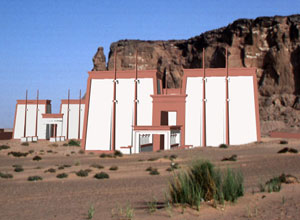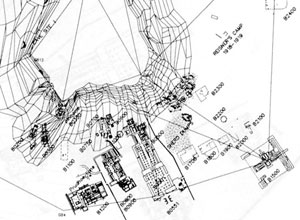Gebel Barkal Sudan (Ancient Nubia) |
Early Work
Initially, in the late 1980s, the Museum of Fine Arts, Boston, and Timothy Kendall began to work with (the late) Bill Riseman on creating simply shaded and wire-frame 3D computer models of the site and the major buildings. This was one of the earliest archaeological projects to take full advantage of the growing sophistication of 2D and 3D computer graphics, to translate traditional 2D archaeological drawings and photographs into accurate and precise 3D computer models with accurate texture maps (for more information on this early work, see: www.learningsites.com/EarlyWork/history.htm).click on images to enlarge
Currently, Learning Sites, Inc., continues to work with Timothy Kendall to reconstruct the site digitally, one temple at a time, using the latest interactive 3D computer graphics technologies. The resulting digital models, high-resolution animations, and virtual worlds will be used first as research tools for better understanding the function and organization of the site and its many buildings. Subsequently, the material will be made available for museum display kiosks and as the basis for educational materials and site publications.
Timothy Kendall returns to excavate at Gebel Barkal every year, providing Learning Sites with updated data, new photographs and drawings, and analyses of his new discoveries. Thus, the results shown here are interim visualizations, as the study of the site and its importance evolve.
Reference
Page Created: February 19, 2005
Page Updated: December 20, 2011
URL:
Page Author: The Institute for the Visualization of History

